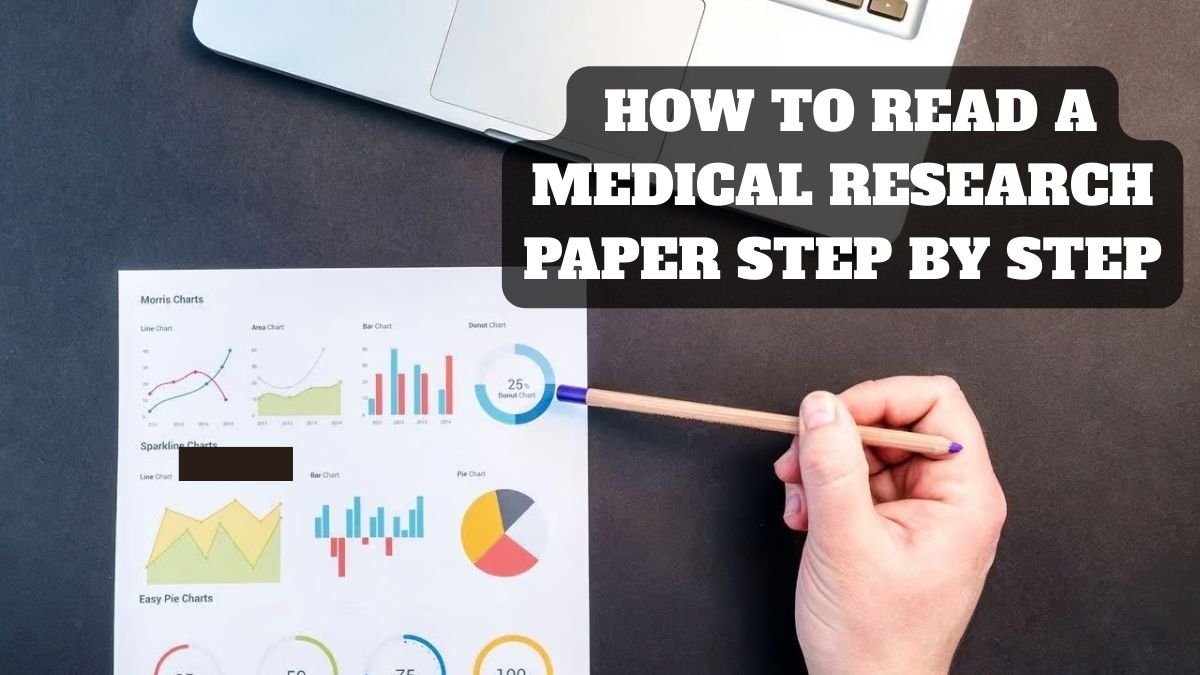How to Read a Medical Research Paper Step by Step We currently live in a world that is overwhelmed with information and one that is knowledge deficient. Well known writer John Nesbitt once said that we are awash in information and starving in knowledge.
This implies that there is an abundance of information, however, it is not easy to comprehend and apply the correct information. The same is the case in scientific articles.
Scientific journals should be read by doctors, researchers, dentists, and students, to make them abreast with the latest developments in their disciplines. However, there are thousands of articles being published annually, the question is how to read and which article to read?
To solve this issue, we will discuss in this article a systematic and uncomplicated approach which will enable any reader to read and comprehend a scientific paper in the right way.
Why do we need to read scientific research?
Scientific articles can be read because of many reasons, including:
- Keeping up with the new trends in your profession.
- Learning on how to offer quality treatment to patients in new ways.
- Choosing and designing experiments of the research students.
- Furthering your education by learning about former studies.
- Determining questions that have not been answered.
It is not enough to get the information quickly on the internet. The superficial information is obtained in newspapers, blogs or general articles. Nevertheless, one cannot say the same thing about reading serious research papers because it is a depth, statistics, and systematic analysis approach.
A Torrent of Scientific Literature – Where Does the Evil Lie?
Let’s look at some statistics:
- Under 1985, about 2.7 million articles were published every year.
- Between 1986 and 1993 the number rose to 3.4 million per year.
- This number rose to about 400,000 per annum between 1994 and 2001.
Suppose a general physician wishes to keep abreast of matters, he or she would need to read 17 articles daily- 365 days in a year!
This has been rendered practically impossible. Thus, we must have some plan and a stepwise method to choose the right articles and read them knowledgeably.
Scientific Article types.
Various kinds of articles are published in the scientific journals. The different types play different roles and significance. They can be categorized into two in a broad sense:
1. Primary Literature
- This consists of original research articles.
- Researchers show their experiments, discoveries and the results.
- These are said to be the most significant and sound.
2.Secondary Literature
- These are review articles, books, editorials, guidelines, etc.
- They are to summarize or analyze primary research.
General Categories:
- Original Research Article -IMRAD format (Introduction, Methods, Results, and Discussion).
- Review Article -An in-depth report on the subject.
- Systematic Reviews and Meta-Analyses – in-depth analysis.
- Case Studies and Case Series Case reports of infrequent or unusual cases.
- Technical News and Visible Essays Informative articles on novel methods or images.
- Opinions, criticism and feedback Editorials, Comments, and Letters.
- To select the correct type, one needs to know the goal of reading an article.
Reading a Scientific Article Step-By-Step Guide.
One does not need to read a scientific article to the end like a story. It is more efficient to read it then strategically. Let’s break it down in steps:
1. Review Title and Abstract.
- The title gives out the subject matter of the research.
- The abstract is a brief description of the whole article.
- Based on this, you may decide whether the article is of importance to you.
2.Read the Conclusion
- It gives an explanation of the results of the researches.
- You can only read beyond what is pertinent to your business or interests.
3.Learn the Introduction.
- It justifies the nature of the research that was carried out.
- What problem or issue is being discussed?
4.Pay attention to the Methods
- This is the description of the research process, samples, instruments, and methods of analysis.
- This defines the reliability of the research or not.
5.Look at the Results
- Figures, tables, and graphs.
- Here the key findings of the study arise.
6.Read the Discussion
- In this, scholars examine the findings.
- It is compared with the previous research and limitations are stated.
7.Look at the References
- These are the ones that the author relied on in their work.
- This will assist in locating more sources.
- Some of the points to remember when reading a scientific article.
Get clear purpose Why are you reading? Is it to prepare exams, research or to enhance your practice?
- Think critically – Do not simply accept everything.
- Note taking – Record the key points, information and findings.
- Time management It is not necessary to read all the articles to the end.
- Select credible sources –Peer-reviewed journals are more credible.
Conclusion
Scientific literature is one of these skills, which can be mastered through practice. And the right approach, however, is to take the correct start, i.e. having the title, doing a glance at the abstract and conclusions and then slowly going through the paper, which is not only going to save you time but also going to make you know something.
